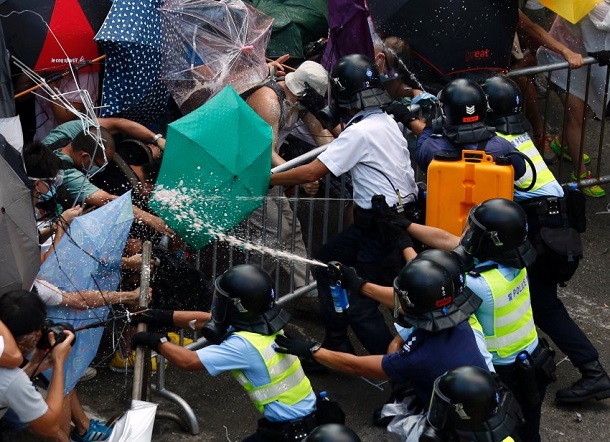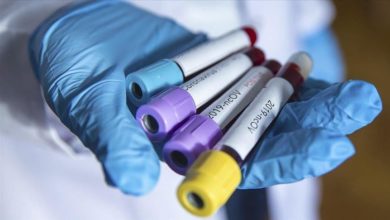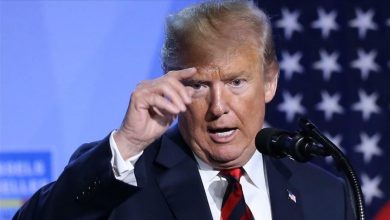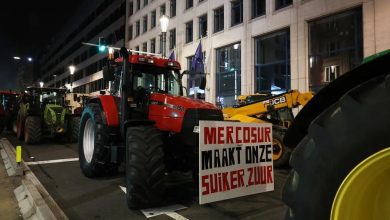In Hong Kong, the police acted violently and with tear gas against students who had tried to occupy the financial district of the metropolis. Surprisingly, the government signaled readiness to talk now.
A wave of demonstrations rolls over Hong Kong: After the most severe incidents since the start of pro-democracy demonstrations in Hong Kong threatens an escalation in China’s Special Administrative Region. Surprisingly activists began on Sunday with the long threatened occupation of the financial district of the Asian economic metropolis.
Thousands of demonstrators besieged the seat of government and blocked partially surrounding streets in the Central Business District said. Several main arteries of Hong Kong were paralyzed.
The activists want pressure on the government and the communist leadership in Beijing to exercise, to allow free elections in Hong Kong. The security forces tried with locks and a police ring around the central demonstration in front of the seat of government to prevent more protests in Hong Kong can connect. Participants were asked to leave the “illegal gathering”. Police used pepper spray against demonstrators in part one. On Sunday afternoon, police officers alleged to have used also with tear gas against the activists.
Hong Kong Riot:”It’s time to get up”

The situation had worsened in the night, as the leaders of the Occupy Central movement, Benny Tai, announced to start ahead of schedule with the “era of civil disobedience” and the occupation of the financial district. It was time to “stand up and act.” Actually, the cast should be heralded until Wednesday with first actions as a “banquet” a national holiday.
Given the incidents at the student protests at the end of a week-long teaching boycott the Occupy movement but decided to put their threat faster. Many demonstrators brought water and food, and armed themselves with goggles against the use of tear gas or pepper spray.
Until Sunday afternoon 78 participants were arrested at the three-day demonstrations, police reported. The day before, 29 students and policemen were injured when the student protests escalated. Although an independent estimate of the crowd was not before – the organizers said 80,000 protesters. But it is likely to be the largest protest of its kind since the former British crown colony in 1997 to the Chinese special administrative region was.
Given the escalation is Hong Kong’s leadership was ready to talk: The government wants to launch a new round of discussions on electoral reform in the near future, Chief Executive Leung Chung-Ying said on Sunday. A specific time frame for this but he did not name.
Hong Kong Riot:Only pre-selected candidates admitted
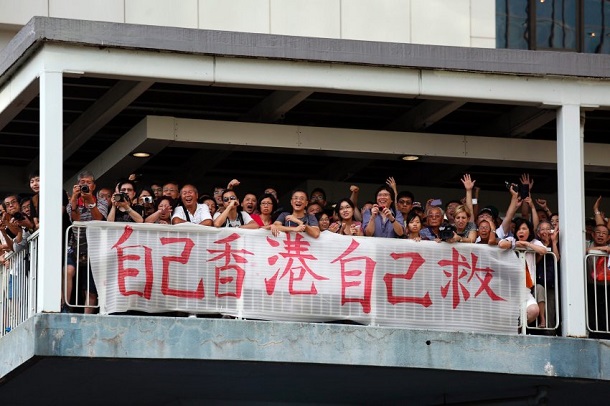
The protests sparked by electoral reform, allowed the Beijing 2017 Although direct elections, but no free nomination of candidates. That is, only pre-selected candidates to be admitted. This candidacy of government critics is virtually impossible. Since its return to China in 1997, the former British colony of Hong Kong is based on the principle of “one country, two systems” governed as an independent autonomous territory of China.
Chief Executive Chung-Yin urged the population not to participate in the protests. He described it as illegal. It was his first public comment on the ongoing student demonstrations for a week for free elections.
From anger over the arrests of activists, tens of thousands had spontaneously demonstrated outside the government headquarters on Saturday. Among those arrested were the three student leader Joshua Wong, Alex Chow and Lester Shum. The 17-year-old Wong was accused of assaults against police officers.
“A new era of civil disobedience has begun,” said Occupy leader Tai and explained why the campaign had been brought forward. “We just had a very passionate citizens react.” Longtime opposition politicians such as Martin Lee or Audrey Eu and even Hong Kong Cardinal Joseph Zen occurred the night before the demonstrators to show their support for the movement.

